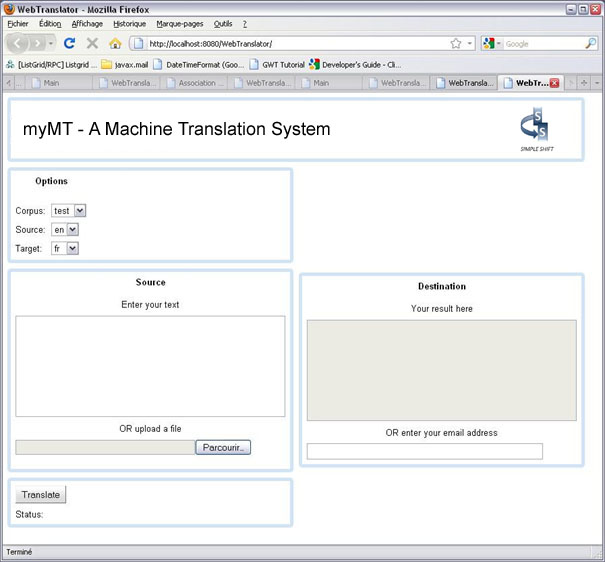|
|
Simple Shift |
|
|
|
|
myMT About MT and SMT Machine Translation (MT) is a translation entirely performed by a computer. Traditionally MT systems were based on rules describing human languages' syntax; such systems were costly to implement and adapt, and improving the output quality required writing more rules, which was hindering the cost-effectiveness of the solutions and compromising the chances of ever getting to a satisfactory solution. Statistical Machine Translation (SMT) was then proposed as an alternative approach: the computer builds a language model and a translation model by "learning" typical phrase structures and translations in the customer's existing corpus of previously-translated documents. This approach is promising because it builds on each customer's typical terminology and style, and it is entirely automated. However it suffers from some structural weaknesses, in particular the syntactic accuracy. Thus future solutions probably lay with a hybrid model associating both statistical machine translation and syntactic analysis (as well as other approaches such as crowd-sourcing). Some of those solutions were already built but they still need improvement. Nevertheless, machine translation is now back on the scene and will probably become a lasting solution to translation high costs and tight deadlines. myMT: Simple Shift's machine translation solution Simple Shift's machine translation solution is currently built on the Moses open-source software, to which we added home-made corpus processing tools:
The corpus preparation phase is absolutely critical when setting up an SMT system, but other criteria must also be looked into, in particular the hardware architecture to guarantee reasonable system's performances, and some internal parameter settings in the Moses application. Simple Shift has set up several SMT systems for international organizations and acquired an extensive experience of SMT systems, backed up by a specialized training with the main author of Moses' source code. We are currently researching various ways to improve the quality of SMT output by building various types of hybrid systems and improving our corpus processing tools. As more international organizations and private companies are getting interested in this field, Simple Shift is definitely going to expand its MT activities and expertise. |



